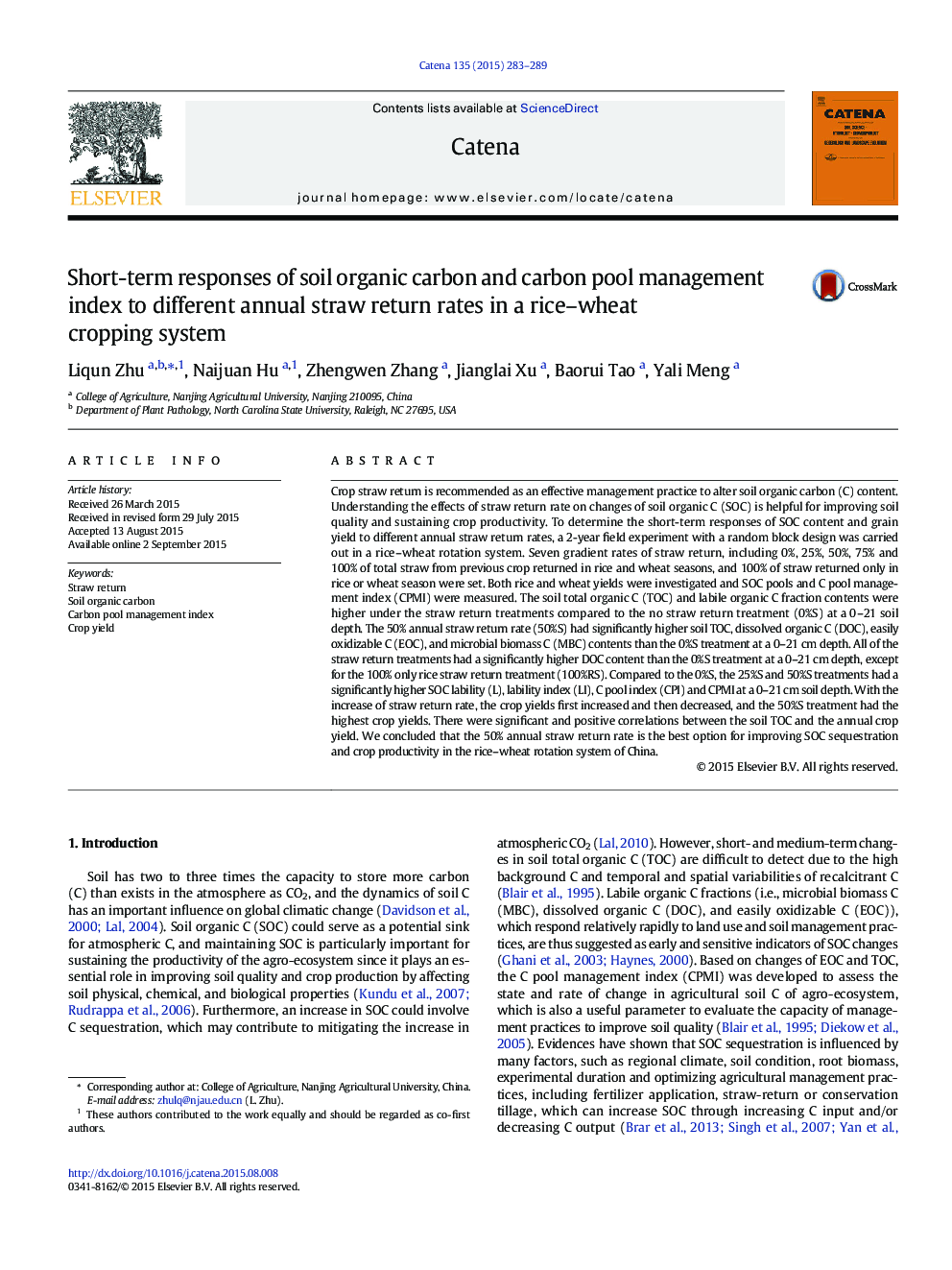| کد مقاله | کد نشریه | سال انتشار | مقاله انگلیسی | نسخه تمام متن |
|---|---|---|---|---|
| 4571100 | 1629217 | 2015 | 7 صفحه PDF | دانلود رایگان |
• Effect of annual straw return rate on soil organic carbon and crop yield was studied.
• The 50% annual straw return rate increased soil organic carbon and crop yield most.
• The 50% annual straw return rate could be a suitable option in a rice–wheat rotation.
Crop straw return is recommended as an effective management practice to alter soil organic carbon (C) content. Understanding the effects of straw return rate on changes of soil organic C (SOC) is helpful for improving soil quality and sustaining crop productivity. To determine the short-term responses of SOC content and grain yield to different annual straw return rates, a 2-year field experiment with a random block design was carried out in a rice–wheat rotation system. Seven gradient rates of straw return, including 0%, 25%, 50%, 75% and 100% of total straw from previous crop returned in rice and wheat seasons, and 100% of straw returned only in rice or wheat season were set. Both rice and wheat yields were investigated and SOC pools and C pool management index (CPMI) were measured. The soil total organic C (TOC) and labile organic C fraction contents were higher under the straw return treatments compared to the no straw return treatment (0%S) at a 0–21 soil depth. The 50% annual straw return rate (50%S) had significantly higher soil TOC, dissolved organic C (DOC), easily oxidizable C (EOC), and microbial biomass C (MBC) contents than the 0%S treatment at a 0–21 cm depth. All of the straw return treatments had a significantly higher DOC content than the 0%S treatment at a 0–21 cm depth, except for the 100% only rice straw return treatment (100%RS). Compared to the 0%S, the 25%S and 50%S treatments had a significantly higher SOC lability (L), lability index (LI), C pool index (CPI) and CPMI at a 0–21 cm soil depth. With the increase of straw return rate, the crop yields first increased and then decreased, and the 50%S treatment had the highest crop yields. There were significant and positive correlations between the soil TOC and the annual crop yield. We concluded that the 50% annual straw return rate is the best option for improving SOC sequestration and crop productivity in the rice–wheat rotation system of China.
Journal: CATENA - Volume 135, December 2015, Pages 283–289
